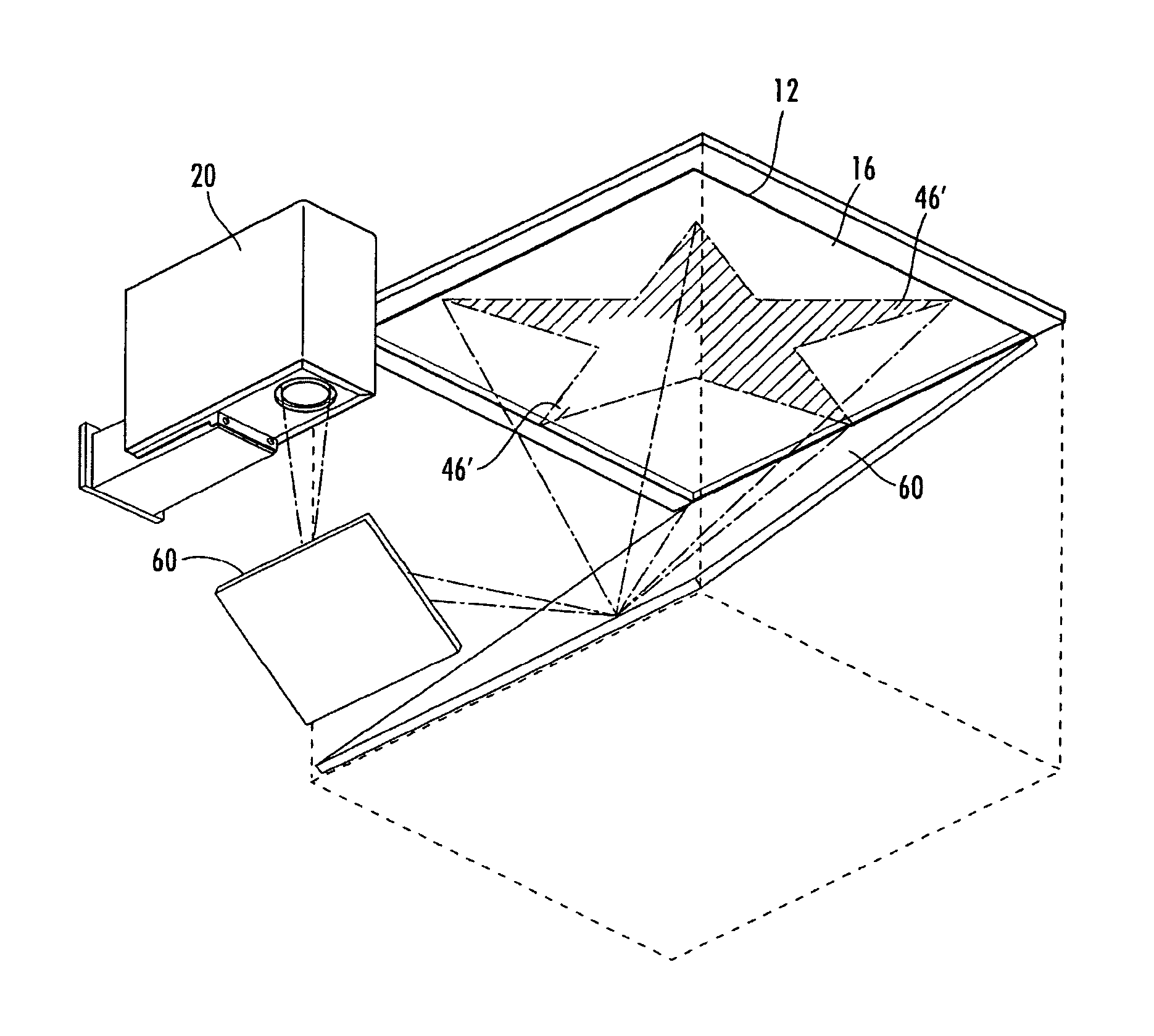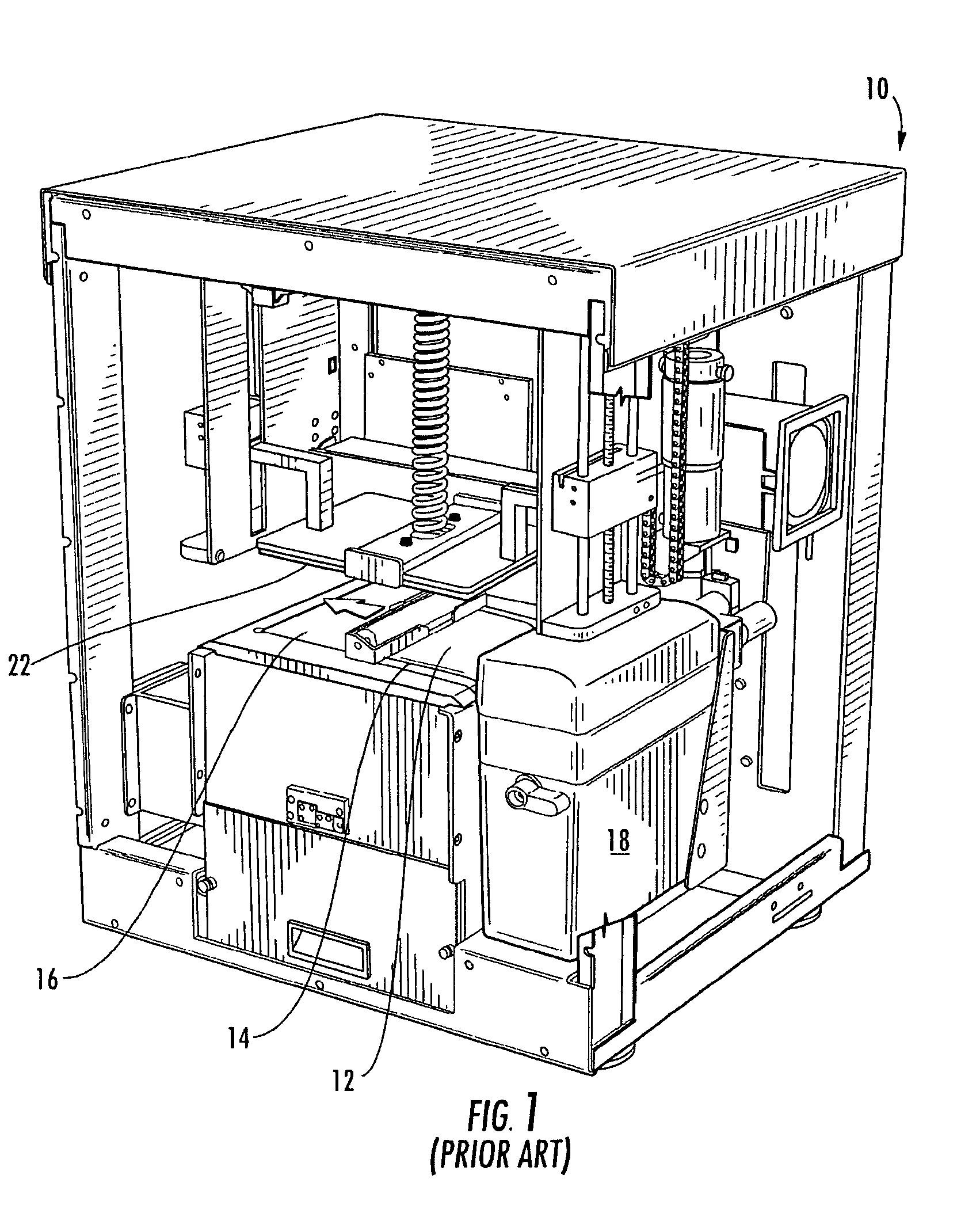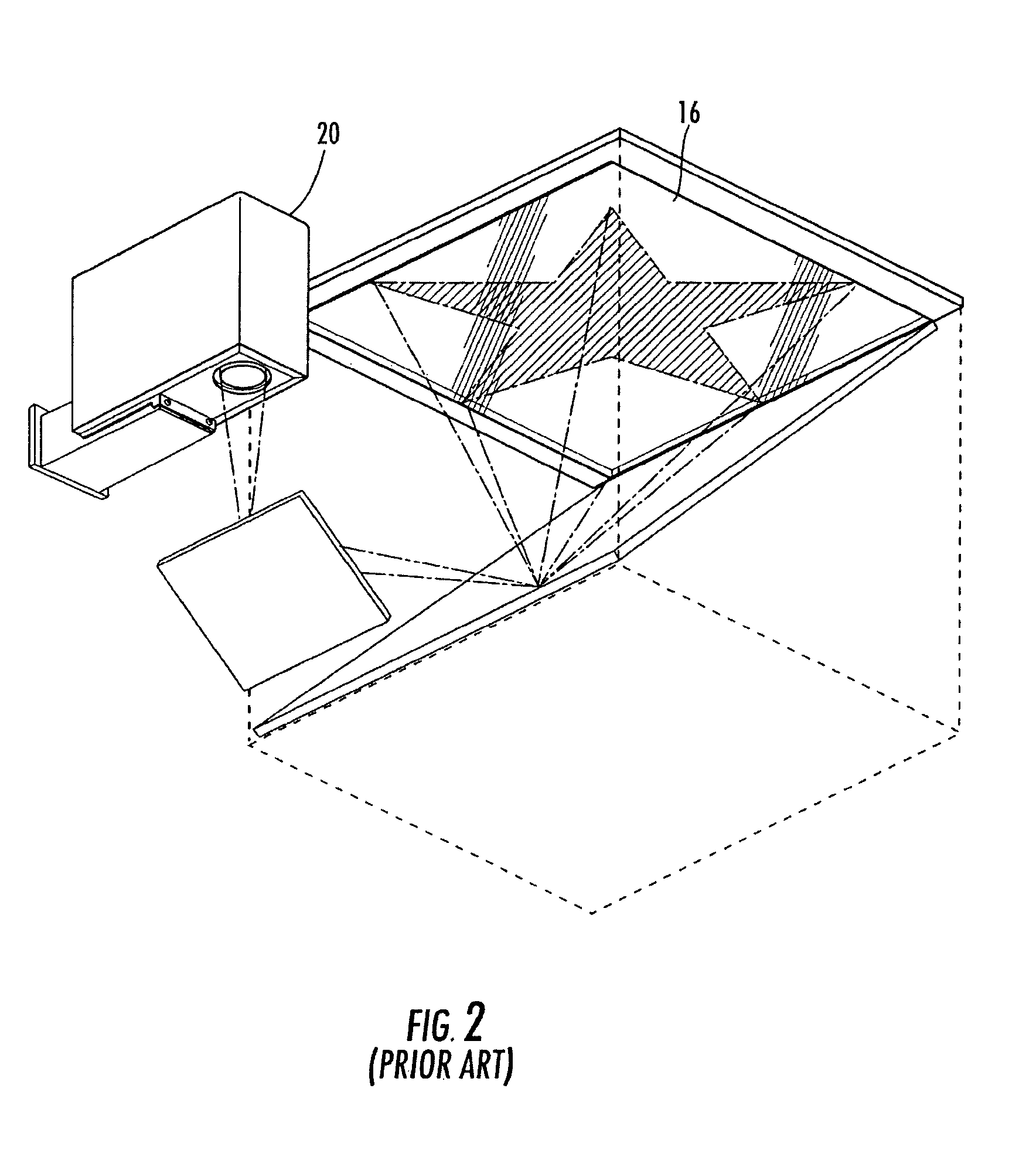Compensation of actinic radiation intensity profiles for three-dimensional modelers
a three-dimensional modeler and intensity profile technology, applied in the field of parts creation using a three-dimensional modeler, can solve the problems of reducing the amount of actinic radiation that is projected by the modeler over time, and modelers having such modelers may produce parts with undesirable parts qualities, so as to reduce the build time of parts
- Summary
- Abstract
- Description
- Claims
- Application Information
AI Technical Summary
Benefits of technology
Problems solved by technology
Method used
Image
Examples
Embodiment Construction
[0023]The present invention now will be described more fully hereinafter with reference to the accompanying drawings, in which some, but not all embodiments of the invention are shown. Indeed, the invention may be embodied in many different forms and should not be construed as limited to the embodiments set forth herein; rather, these embodiments are provided so that this disclosure will satisfy applicable legal requirements. Although the methods and apparatus are described and shown in the accompanying drawings with regard to a three-dimensional modeler utilizing the film transfer imaging technique, it is envisioned that the methods and apparatus of the present invention may be applied to any now known or hereafter devised three-dimensional modeler in which it is desired to cure material with a substantially equivalent (or otherwise controlled) amount of actinic radiation per surface area in order to produce three-dimensional parts. Like numbers refer to like elements throughout.
[0...
PUM
| Property | Measurement | Unit |
|---|---|---|
| time | aaaaa | aaaaa |
| surface area | aaaaa | aaaaa |
| imaging | aaaaa | aaaaa |
Abstract
Description
Claims
Application Information
 Login to View More
Login to View More - R&D
- Intellectual Property
- Life Sciences
- Materials
- Tech Scout
- Unparalleled Data Quality
- Higher Quality Content
- 60% Fewer Hallucinations
Browse by: Latest US Patents, China's latest patents, Technical Efficacy Thesaurus, Application Domain, Technology Topic, Popular Technical Reports.
© 2025 PatSnap. All rights reserved.Legal|Privacy policy|Modern Slavery Act Transparency Statement|Sitemap|About US| Contact US: help@patsnap.com



